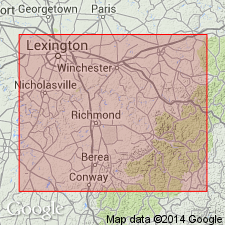
- Usage in publication:
-
- Waco limestone
- Modifications:
-
- Original reference
- Dominant lithology:
-
- Limestone
- Clay
- AAPG geologic province:
-
- Cincinnati arch
Summary:
Pg. 10, 52; also 1905, Kentucky Geol. Survey Bull., no. 6, p. 145. Waco limestone. Basal part solid limestone, 1 to 2 feet thick; upper part numerous thin layers of fossiliferous limestones interbedded with clay. Thickness 8 to 10 feet. Middle member of Alger formation (of Niagaran age). Underlies Estill clay and overlies Lulbegrud clay. [Age is Middle Silurian (Niagaran). In 1931 (Kentucky Geol. Survey, ser. 6, v. 36, p. 172, 173) Foerste assigned this limestone to Clinton epoch.]
[Named from Waco, Madison Co., east-central KY.]
Source: US geologic names lexicon (USGS Bull. 896, p. 2259-2260).
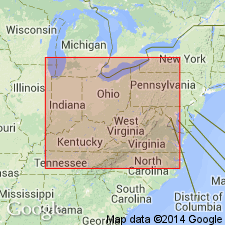
- Usage in publication:
-
- Waco limestone
- Modifications:
-
- Revised
- AAPG geologic province:
-
- Cincinnati arch
Summary:
Chart 3. Correlation chart shows Waco limestone stratigraphically below Dayton limestone and above Lulbegrud conglomerate. [Age is Middle Silurian (Niagaran).]
Source: US geologic names lexicon (USGS Bull. 1200, p. 4097).
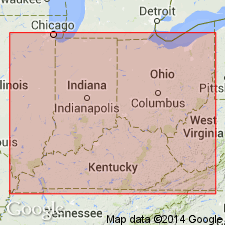
- Usage in publication:
-
- Waco Member
- Modifications:
-
- Revised
- AAPG geologic province:
-
- Cincinnati arch
Summary:
Reassigned as Waco Member of Noland Formation (new). Term limestone dropped from name because such lithologic designation is not appropriate. Uppermost member of formation. Overlies Lulbegrud Member; underlies Estill Shale. At type section, consists of basal layer of massively evenly bedded limestone, about 2 ft thick, overlain by about 10 ft of fossiliferous clay with very thin interbeds of limestone. Limestones in Waco position from Preston to near Hillsboro not recognized with certainty.
Source: GNU records (USGS DDS-6; Reston GNULEX).
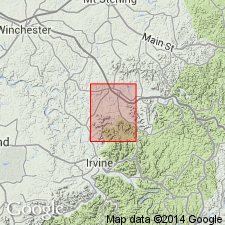
- Usage in publication:
-
- Waco Member*
- Modifications:
-
- Revised
- AAPG geologic province:
-
- Cincinnati arch
Summary:
Reassigned as Waco Member of Crab Orchard Formation.
Source: GNU records (USGS DDS-6; Reston GNULEX).
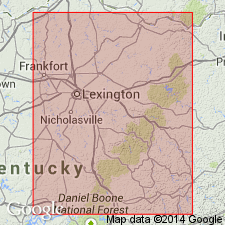
- Usage in publication:
-
- Waco Member*
- Modifications:
-
- Revised
- AAPG geologic province:
-
- Cincinnati arch
Summary:
Reassigned as Waco Member of Alger Shale of Crab Orchard Group. Waco is characterized by a prominent basal ledge generally composed of two to three beds of dolomite totaling 0.5 to 3 ft in thickness, overlain by an interval as much as 10 ft thick consisting of several thin dolomite beds and lenses, commonly 1 to 2 in thick, containing abundant megafossils (horn corals, brachiopods, and bryozoans), and interbedded with greenish-gray shale beds a foot or more thick. Underlain by Lulbegrud Shale Member and overlain by Estill Shale Member, both of Alger Shale.
Source: GNU records (USGS DDS-6; Reston GNULEX).
For more information, please contact Nancy Stamm, Geologic Names Committee Secretary.
Asterisk (*) indicates published by U.S. Geological Survey authors.
"No current usage" (†) implies that a name has been abandoned or has fallen into disuse. Former usage and, if known, replacement name given in parentheses ( ).
Slash (/) indicates name conflicts with nomenclatural guidelines (CSN, 1933; ACSN, 1961, 1970; NACSN, 1983, 2005, 2021). May be explained within brackets ([ ]).

